Benefits and harms, features of the use of savoy cabbage
The stereotype of the opinion about the capriciousness of Savoy cabbage is confidently dispelled by experienced farmers. And its useful qualities make the product a serious alternative in the field of cooking and medicine to the more familiar white-headed culture. Let's talk about savoy cabbage: its beneficial properties, cultivation and use in recipes.
The content of the article
Characteristics of savoy cabbage
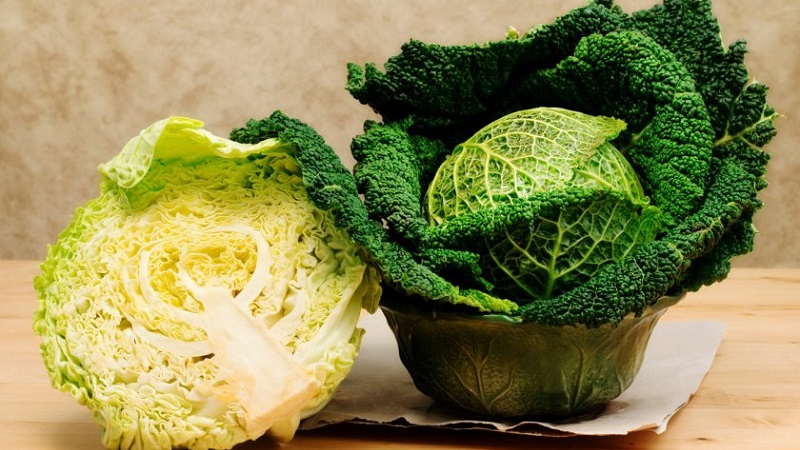
Head of savoy cabbage differs from other varieties of this vegetable crop in a loose structure and a relief texture of the leaves. It lacks the usual density due to the absence of rigid veins. Thanks to this feature, the forks can be easily disassembled into leaves. Another characteristic feature of the culture is the absence of a specific odor emitted by white cabbage during the cooking process.
When cultivating this vegetable plant, experienced farmers have identified its characteristic advantages and disadvantages. So, the advantages of growing Savoy cabbage include:
- no need to apply special knowledge and skills;
- simplicity of growing conditions;
- culture resistance to low temperatures;
- increased viability in arid conditions;
- resistance to disease.
The disadvantages of cultivation are:
- the need for a significant area for each plug;
- small head of cabbage;
- Frequent overripe or cracking of the forks;
- low keeping quality of the crop.
Useful and medicinal properties of savoy cabbage
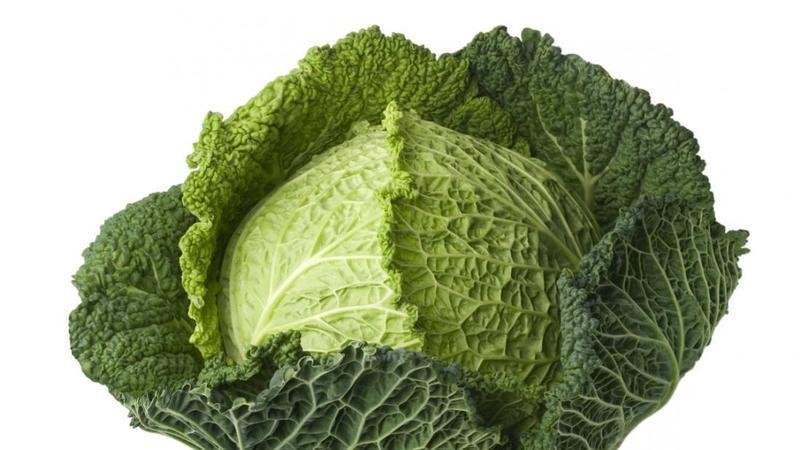
The culture is endowed with valuable nutritional and medicinal properties. By the amount of vitamins C, E, B1 and B2, dry substances and crude protein, the vegetable is more than twice ahead of white cabbage. It is also rich in potassium, calcium, phosphorus, magnesium, iron, mustard oil and fats.
Another advantage of this culture is the absence of veins in the heads of cabbage leaves. Indeed, due to this, they are much easier absorbed by the body, which becomes a redefining factor for the high dietary value of the product, as well as its healing effect on the gastrointestinal tract.
The following medicinal properties of savoy cabbage can be distinguished:
- strengthening the immune system;
- cleansing the body of toxins;
- beneficial effect on the cardiovascular system;
- assistance in the restoration of the nervous system and its stimulation;
- strengthening of bone tissue;
- fight against high blood pressure;
- diuretic and helping to maintain kidney health;
- normalization of the gastrointestinal tract;
- help in losing weight;
- improvement in gastritis and ulcers;
- fight against loss of strength and vitamin deficiency;
- elimination of cholesterol;
- cleansing the liver;
- beneficial effect on vision;
- lowering blood sugar levels;
- improving the health of pregnant women and the elderly;
- prevention of cancer.
If any of the listed diseases is in an acute stage, the use of this vegetable is prohibited.
Is harm possible and who should not be used
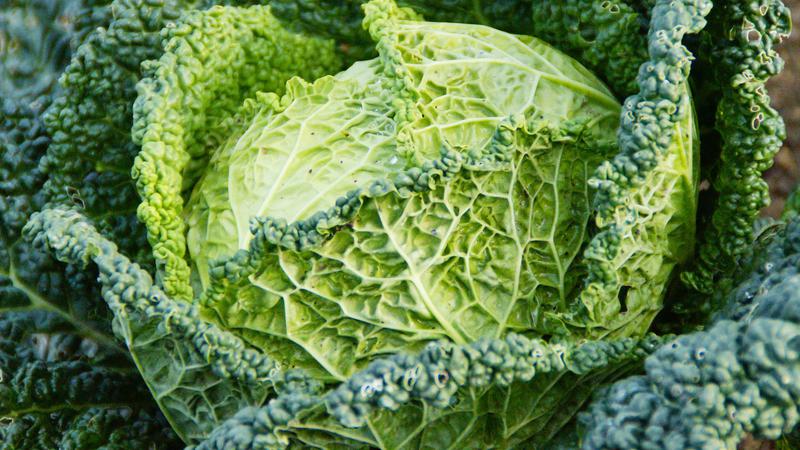
Taking into account the beneficial properties of cabbage, do not forget about the possible harm of this vegetable garden. And although such is much less common, it is better to remember about it.
This vegetable can cause gas production, especially if consumed in large quantities. Therefore, pregnant women and young children need to eat Savoy cabbage with caution, or completely abandon it.People suffering from diseases of the gastrointestinal tract in the acute stage should not completely abandon the product, but it is recommended to consult with your doctor about the advisability of introducing this vegetable into the diet.
Also, an individual intolerance or a general tendency to allergies may become a factor that speaks of the inappropriateness of the use of savoy cabbage. And if there is a malfunction in the thyroid gland, you should completely abandon this product.
Attention! After performing abdominal surgical interventions in the area of the sternum and peritoneum and throughout the entire recovery period, it is strictly forbidden to use Savoy cabbage.
How to use: recipes
Savoy cabbage is widely used in cooking. It can be stewed, fried, boiled and, of course, made salads.
Cabbage rolls
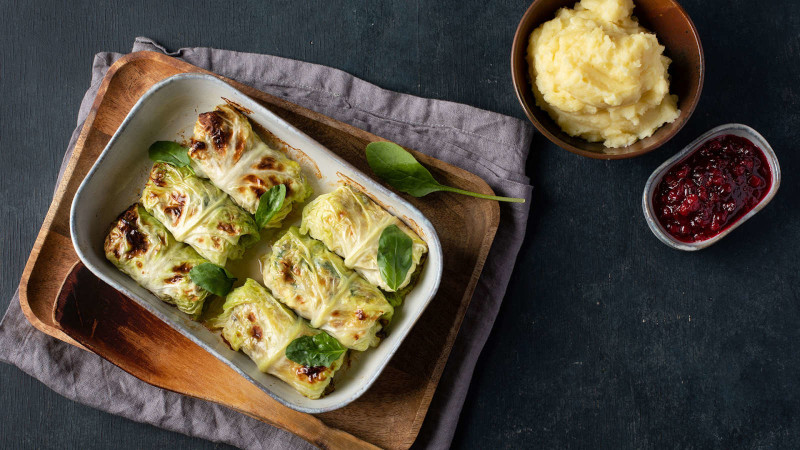
With the leaves of this vegetable culture, cabbage rolls are more juicy and tender than when using white cabbage varieties. The dish itself comes out more useful due to the high level of vitamins it contains.
Ingredients for stuffed cabbage:
- 1 head of cabbage;
- 1 bunch of parsley;
- 500 g minced meat;
- 0.5 tbsp. rice;
- ground black pepper;
- 2 carrots;
- 2 onions;
- 2 cloves of garlic;
- 50 g green onions;
- 1 egg;
- 2 pinches of salt;
- 250 ml of meat broth;
- 2 tbsp. l. oils.
Cooking process:
- Rice is washed and boiled.
- Onions are chopped, carrots are rubbed on a coarse grater, transferred to a pan and fried with the addition of vegetable oil until golden brown.
- The head of cabbage is divided into leaves and the thickenings are cut off.
- Pour water into a saucepan to half the volume, bring to a boil, salt and put the cabbage there for 3 minutes.
- Rice is mixed with minced meat and fried vegetables.
- The garlic is chopped and added to the first mixture along with the egg.
- Parsley is chopped and also sent to the meat mass.
- Cabbage leaves are in turn filled with the resulting filling with a spoon, twisted and tied with onion feathers, pre-treated with boiling water.
- Place it tightly in a saucepan and pour over broth.
- Stew for an hour over low heat. The dish is ready.
Pickling

Savoy cabbage is not believed to be suitable for fermentation... But this statement easily refutes the following recipe.
Components:
- 5 kg of cabbage;
- 500 g fresh cranberries;
- 150 g dill;
- 100 g of salt.
Cooking method:
- Savoy cabbage is chopped and rubbed by hand with salt.
- Cranberries in a sieve or colander are gently washed under running water.
- Dill is crushed.
- Greens, vegetables and berries are mixed and placed tightly in a glass or enamel container.
- Cover the top with whole cabbage leaves and press down with a plate.
- The cargo is scalded and placed on a product blank.
- At room temperature, the fermentation process will begin in two days, as evidenced by the appearance of brine.
- On the fifth day, the finished dish is moved to the refrigerator or cellar.
Salad
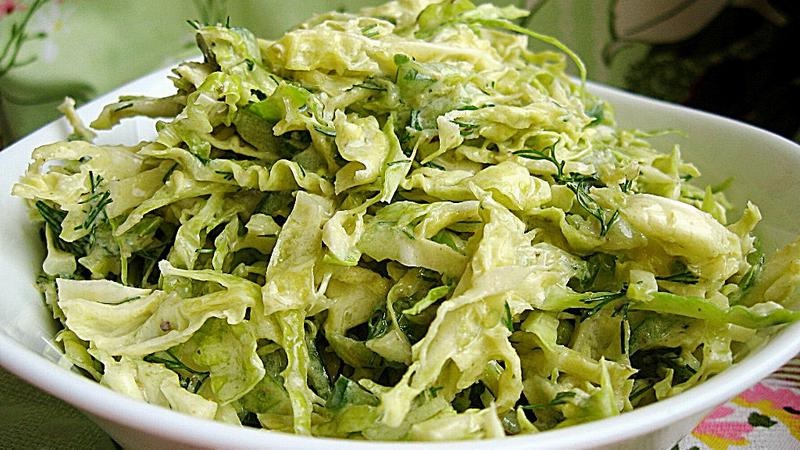
A simple, quick, healthy and delicious savoy cabbage salad recipe for every day. It is suitable for those who are trying to lose weight.
Salad Ingredients:
- 1 small head of cabbage;
- 2 fresh cucumbers;
- 1 bunch of dill;
- 1 clove of young garlic;
- 3 tbsp. l. low-fat sour cream or unsweetened yogurt;
- 2 tbsp. l. feta cheese.
Recipe:
- Cabbage is cut, cucumbers are cut into rings, dill is chopped, garlic is crushed.
- Prepare a dressing of sour cream and cheese crushed with a fork.
- All components are mixed and enjoy a light taste.
There is no need to salt the salad, this will only spoil the natural taste of the products.
Application in traditional medicine
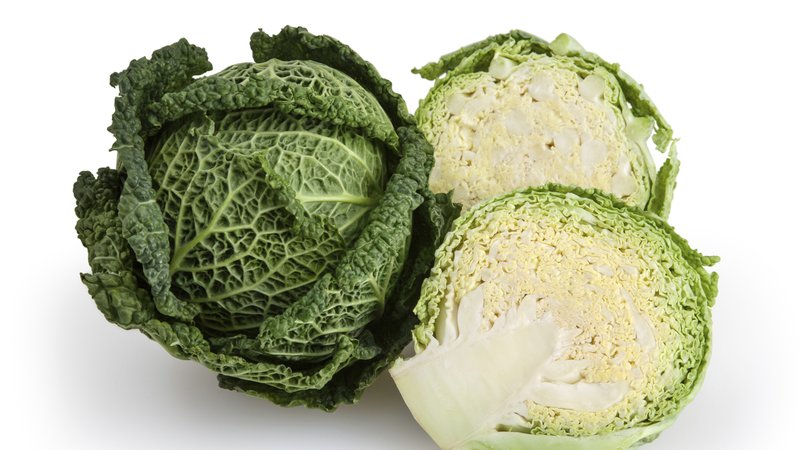
Savoy cabbage is also widely used in folk medicine. The medicinal properties of the vegetable make it indispensable for various diseases. Fresh this culture is used for:
- iodine deficiency;
- seasonal avitaminosis;
- dysfunction of the thyroid gland;
- hormonal disruptions;
- obesity;
- problems with the prostate;
- hangover syndrome;
- eczema, burns, shingles;
- subcutaneous seals.
Read also:
Ornamental cabbage: culture features
Sowing and cultivation features of Japanese cabbage
How to prepare Korean cauliflower for the winter: a classic recipe and its variations
Conclusion
The potential harm to savoy cabbage is minimal, and the benefits make it a great alternative to the more popular white cabbage. Moreover, in terms of the vitamin composition and taste, it is in many ways ahead of it. Savoy cabbage is used not only in cooking, but also successfully used in the field of traditional medicine.